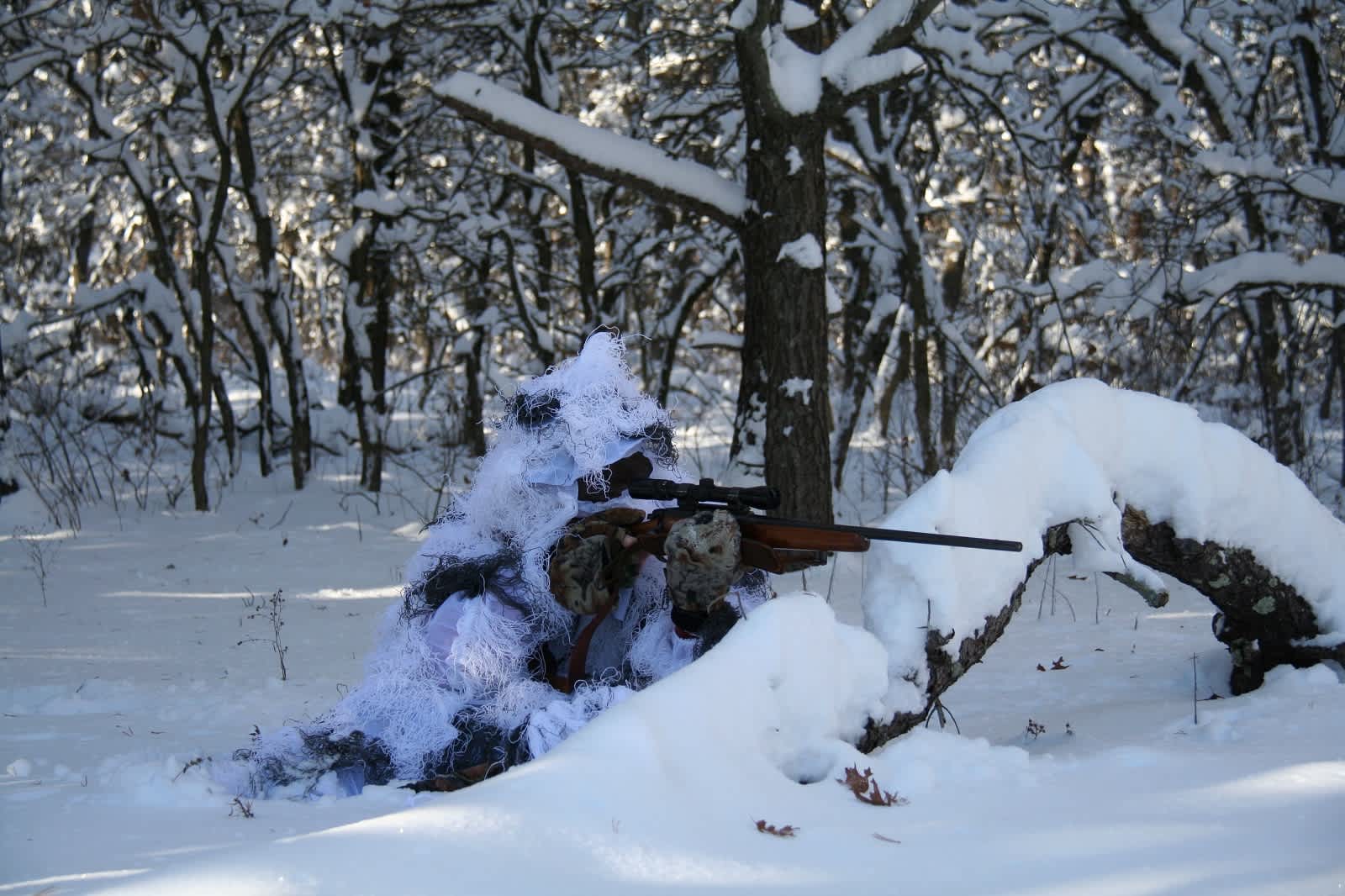Take Advantage of Expanding Wolf Hunting Opportunities
Bernie Barringer 02.03.14

In the past five years, opportunities to hunt wolves in the United States have greatly increased. Here’s the lowdown on how and where to take advantage of this exhilarating hunting experience.
Wolves once roamed over much of the United States, but wolves do not do well with farming, ranching, and the industrial revolution. Over the course of our country’s history, wolf populations in the Western United States were all but wiped out while remnants of timber wolves remained in the forested areas of the Upper Midwest.

Thanks to recovery efforts, wolf populations have expanded greatly in the Midwest over the past 20 years. Large populations are established in Michigan, Minnesota, and Wisconsin. So large, in fact, that they have become a serious problem, and the governments in those states, particularly in Minnesota, pay large sums for wolf control every year.
Wolves have all but wiped out the deer population in some areas of northern Minnesota. After decimating the animals in one area, they move to another and the population rebounds. I have personally witnessed this behavior. In one region where I hunt deer, the wolves expanded to the point that I was seeing more wolf tracks in the deer trails than deer tracks. A neighboring farmer lost a couple calves to wolves, and the government trapper caught eight wolves on his farm, which seemed to make a small difference. Wolves are efficient predators and often kill far more than they can consume when the conditions permit it.
In the Western United States, wolf problems are due to intentional release of wolves into Yellowstone Park in the 1990s. Wolves know no boundaries and have expanded into Idaho, Washington, Wyoming, Montana, and Utah. Elk, buffalo, and deer populations were hammered by large numbers of wolves and with no means of population control due to the Endangered Species Act (ESA).
Opponents of wolf control poured millions into stopping the delisting of abundant wolves from the Endangered Species Act, while ranchers, state resource departments, and would-be wolf hunters argued that the large number of wolves shows that the ESA works and wolves should now be delisted. A long battle through the courts systems allowed wolf hunting in Montana and Idaho, and later in Wyoming. Finally, reason prevailed over emotion so hunters and ranchers could begin to keep the wolf population in check.

When the wolves were delisted, Minnesota moved quickly and held its first wolf hunting and trapping season in 2012. Michigan and Wisconsin followed. The wolf opportunities in the West are quite different than in the Midwest, however. As an example, a wolf hunter can get as many as 10 tags in Idaho, while you must put in for a drawing to get a tag in Minnesota, Wisconsin, or Michigan. These states have far more applicants than wolf permits allowed, so a preference point system has been put in place.
A preference point is given each time you apply for a license and do not draw. This increases your chances of drawing the following year. For example, I put in for a wolf tag in 2012 and 2013 and was not drawn either year. I now have two preference points. In 2013, many applicants drew with one point, so I feel confident that I will draw in 2014 with two points and a few will be selected with one point once again.
Check the state DNR websites for specifics on how to draw a wolf tag in Minnesota, Wisconsin, and Michigan. If you are interested in hunting or trapping wolves one day, you should start applying now so you can build up preference points.
Wolf hunting in the West has come of age and is now a sport that many hunters have grown to love. Wolves can be taken by spot and stalk hunting, predator calling, or trapping. Each of these has its own challenges and rewards, and each their own following. Wolf hunting has been going on in Canada since the settlement of North America and hunters are looking to Canadians for advice and equipment. Guides and outfitters who offer wolf hunting trips in the West offer unique hunting experiences.

In contrast with the West, wolf harvest numbers are low in the Midwest. Only 23 wolves were killed during Michigan’s inaugural wolf season. But hunters and trapping are honing their craft, learning as they go, and developing techniques that increase their odds of bagging this top-of-the-line predator that is very crafty and learns quickly. It’s clear that hunting and trapping wolves is one of the greatest challenges that can be faced by an outdoor enthusiast.
Wolf hunting opportunities have expanded across the country and if you have any interest in collecting one of the toughest predators that walks the earth, you should start making plans now to get yourself a tag and take on the challenge.
Follow Bernie’s bowhunting adventures on his blog, bowhuntingroad.com.

